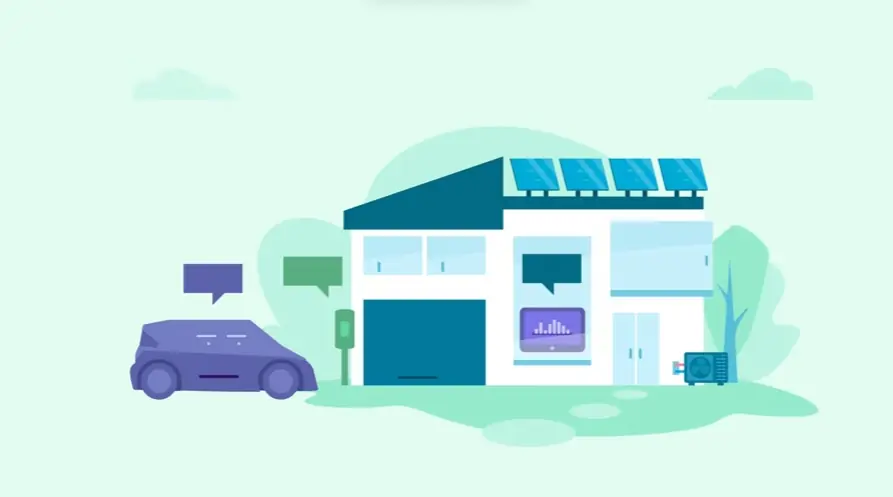Defining your virtual tour objectives
Achieving desired outcomes with a virtual tour begins with defining clear objectives. Simply having an immersive experience is a start, but knowing precisely what you want viewers to do or understand unlocks its full potential. Businesses should align their tour goals with broader strategic aims, whether that involves generating leads, increasing product understanding, or driving direct sales. Identifying the specific target audience helps tailor the tour's content and calls to action for maximum impact.
They find that determining the primary desired action viewers should take is crucial. Is it filling a form, requesting a demo, or making a purchase? Crafting clear, action-oriented language for these calls to action guides viewers effectively. Beyond the main goal, consider secondary actions for those not yet ready to commit. Tracking progress against these defined goals is essential, moving beyond simple view counts to measure tangible business results.
Measuring the success of a 3D Virtual Tour Video involves setting key performance indicators. They track metrics like how long people spend exploring, which areas capture the most attention, and click-through rates on interactive elements. Analyzing this viewer behavior helps identify engaging sections and points where interest might drop. Incorporating elements of social proof, like showing satisfied customer logos or testimonials, can build trust and encourage action. Optimizing the experience often involves A/B testing different versions of the tour or its components to see what resonates best.
Ultimately, a 3D walkthrough video becomes a powerful tool when its creation and deployment are guided by specific, measurable objectives. This strategic approach ensures the tour actively contributes to achieving business goals, providing valuable insights for continuous improvement across different viewing platforms.
Effective 3D navigation methods for virtual tours
Effective navigation within virtual experiences guides user action and comprehension. Success hinges on implementing clear calls to action and meticulously measuring return on investment. Teams should employ specific action-oriented language, moving past vague phrases. Directives encouraging trials, demonstrations, or downloads resonate more strongly, proving relevant to viewer progress and content focus.
Assessing video value requires comparing creation expenses with tangible benefits gained. This includes growth in qualified prospects or decreased sales cycle duration as viewers become better informed. Lower support query volume also indicates successful feature comprehension. Crafting an effective product tour video means presenting features within authentic contexts, making them relatable.
Showcasing how a product fits into daily operations or resolves industry-specific issues elevates its perceived worth. Understanding user interaction proves crucial; analyzing viewer behavior with tools like heatmaps reveals engagement patterns. This granular insight highlights confusing parts or where interest wanes. Incorporating social proof quickly builds confidence.
Displaying recognized client logos or sharing user statistics lends strong credibility. Analyzing viewer behavior through heatmaps helps refine the user's journey within a guided tour video. Iterative improvement through A/B testing various video components unlocks insights into audience preferences, driving higher conversion rates. Tailoring content and duration for different platforms ensures optimal engagement.
Ensuring high visual quality in virtual tours
Enhancing the impact of virtual tours extends beyond simply providing a view. Creators should focus on guiding the viewer journey and ensuring every interaction provides value and encourages progression. This involves carefully considering how viewers experience the content, whether crafting a product walkthrough video showcasing features or developing a training simulation video designed for internal learning. Understanding viewer engagement is paramount to success and optimizing the experience.
Teams can leverage sophisticated viewer behavior analysis tools to gain deeper insights than simple presence provides. Heatmaps reveal where attention focuses, while tracking viewer drop-off points pinpoints sections that might confuse or disengage. This granular data allows for precise adjustments, ensuring the content holds interest and effectively communicates its message from start to finish, demonstrating solutions within relevant contexts.
Building trust and refining effectiveness requires strategic effort. Incorporating social proof, like recognizing well-known users or sharing compelling statistics, quickly establishes credibility. Furthermore, A/B testing various elements allows teams to empirically discover what resonates most with their target audience and drives desired outcomes across different viewing platforms.
- Implement action-oriented calls clearly directing viewers towards the next step relevant to their interest.
- Measure success by tracking metrics such as qualified leads generated or reductions in support inquiries, comparing value against production costs.
- Showcase how offerings integrate into existing workflows or solve specific problems faced in real-world scenarios.
- Continuously test elements like thumbnail images, initial content hooks, and the specific wording used in calls to action.
Focusing on these elements transforms a visual exploration into a powerful tool for engagement and conversion.
Making your video tour accessible
Making your video tour accessible means ensuring it not only reaches viewers but also drives meaningful engagement and delivers measurable results. This involves strategic planning beyond just creating the visual experience. Readers can turn a compelling visual journey into a powerful business tool by focusing on key elements that encourage action and provide valuable insights.
Implementing clear and specific calls to action is crucial. Instead of generic phrases, use action-oriented language directly related to the video's purpose and where the viewer is in their journey. Think "Request a Demo" or "Download the Report." This guides viewers towards the next desired step. To truly understand impact, businesses must measure the return on investment by tracking production costs against generated value. This includes quantifying increases in qualified leads or noting reduced sales cycle length due to better informed prospects.
Showing product features within real-world scenarios makes a tour relatable. Demonstrate how a product fits into existing workflows or solves specific industry problems to boost its perceived value. Incorporating social proof, like showing recognizable company logos or sharing user statistics, builds immediate credibility and trust. Analyzing viewer behavior with tools like heatmaps reveals exactly which parts resonate or cause drop-off, offering invaluable data for refinement.
Consider A/B testing different elements, from the initial thumbnail image to the wording of calls to action, to discover what connects best with the target audience and drives higher conversions. Optimizing for different platforms means considering how viewers consume content there; social media might favor shorter videos understandable without sound, while a page embed allows for more detail.
Strategically placed calls to action and a focus on measurable outcomes transform a 3D Virtual Tour Video example from a passive viewing experience into an active driver of business goals. Understanding viewer interaction within a 3D walkthrough video example through data analysis empowers continuous improvement and ensures the video delivers tangible results.
Designing the virtual space effectively
Building on the inherent ability to capture attention, maximizing the impact of a virtual space requires deliberate design and strategic measurement. It involves moving beyond simply showcasing a location or product to crafting an experience that drives tangible results. Whether crafting a guided tour video example or focusing on a detailed product showcase, every element should serve a purpose, guiding viewers toward desired actions and providing valuable insights for continuous improvement. Understanding how audiences interact within the virtual environment is paramount.
Analyzing viewer behavior through heatmaps and attention tracking tools reveals precise interaction points within the tour, highlighting compelling or confusing sections. Leveraging these insights, the next step involves strategic optimization and clear calls to action. Crafting clear calls to action precisely aligning with objectives ensures viewers know their next step, moving beyond generic prompts to specific requests like starting trials or requesting demos. Measuring measuring ROI quantifies success by linking production costs to tangible gains like increased qualified leads or reduced sales cycles, demonstrating the tour's business value.
- Incorporate social proof subtly, like flashes of well-known company logos.
- Conduct A/B testing on elements such as thumbnail images or initial content segments.
- Show products or spaces in real-world scenarios demonstrating practical application.
- Tailor the experience for different platforms, designing for silent viewing on social feeds.
Using virtual tours for marketing
Applying virtual tours for marketing involves a deliberate approach, often alongside other valuable assets like a focused product walkthrough video example or an interactive training simulation video example. Marketers ensure these immersive experiences yield tangible results through strategic elements and performance analysis. Clear and specific calls to action are paramount at the culmination of a virtual tour experience, moving beyond vague prompts to action-oriented language aligning with the viewer's journey stage.
Measuring the return on investment necessitates tracking production expenditure against tangible value generated. This includes quantifying increases in qualified leads, decreases in sales cycle duration from better-informed prospects, or reductions in support volume from users understanding features intuitively.
Analyzing viewer behavior through tools providing heatmaps and attention tracking reveals exactly which tour parts resonate or cause drop-offs. This granular data helps identify confusing segments needing refinement. Incorporating social proof, perhaps brief flashes of well-known user logos or statistics on satisfied customers, builds credibility quickly.
- Conducting A/B testing on different tour elements yields insights into audience resonance and drives higher conversions.
- Testing variables like thumbnails, initial content, CTA wording/placement, or script nuances proves valuable.
- Optimizing for platforms considers viewer intent and environment.
- Social media demands instant attention and sound-off comprehension, favoring shorter content, while product pages allow for greater detail assuming higher intent.
Leveraging data from viewer interaction informs optimization, making virtual tours powerful marketing instruments.
Where to share your video tour
Moving past the creation phase, the focus shifts to ensuring these powerful visual assets achieve maximum impact. Strategically placing 3D virtual tours means identifying where potential viewers naturally gather online and presenting the content in a manner that immediately captures their interest and encourages exploration.
Teams recognize the value in tailoring the presentation for diverse digital landscapes. Showing solutions within real-world scenarios helps viewers envision possibilities for themselves. Incorporating elements of social proof early can swiftly build confidence and credibility persuading viewers the experience holds significant value and warrants their time investment.
Furthermore the strategic deployment of visual tours remains incomplete without rigorous measurement. Marketing teams carefully track the return on investment evaluating production costs against tangible business value generated such as increased qualified leads or decreased support inquiries. Deep analysis of viewer behavior provides invaluable insights pinpointing exactly which segments captivate attention and which might cause viewers to disengage.
- Craft clear action-oriented calls to action tailored specifically to the platform and the viewer likely stage in their journey. Specific phrases like "Explore Now" or "Request Access" outperform generic prompts.
- Utilize advanced analytics tools including heatmaps and attention tracking to dissect viewer interaction patterns frame by frame. Understanding how viewers navigate a 3D Virtual Tour Video sample directly informs content refinement and placement optimization.
- Implement structured A/B testing across various presentation elements. Experimenting with different thumbnail images the opening moments of the tour or the wording and placement of calls to action reveals critical audience preferences and optimizes conversion pathways.
- Adapt the tour format and length for different distribution channels. A concise visually striking version designed for quick consumption works best on social media feeds often relying on text overlays for understanding while a more comprehensive 3D walkthrough video sample finds its ideal home embedded within a product page or dedicated landing site.
Ultimately a strategic approach to sharing and optimizing 3D virtual tours transforms them from mere visual showcases into potent tools capable of driving significant audience engagement and contributing directly to achieving core business objectives.
Integrating calls to action within tours
Moving past passive viewing, virtual tours become dynamic tools when guiding audience action. Embedding effective points for interaction transforms exploration into opportunity. Think about leading viewers naturally toward next steps relevant their interests journey stage.
Clear specific calls to action prove vital tour concludes or relevant moments arise. Instead generic prompts like find out more, employ action-oriented text. Use phrases such as start your free trial, request a demo, download the report. These connect directly tour objectives desired viewer outcomes. Tailoring phrasing enhances relevance increases likelihood conversion.
Measuring tour impact extends beyond simple view counts. Effective analysis involves tracking production costs against value generated. Consider increased qualified leads a key metric demonstrating reach effectiveness. Reduced sales cycle length shows better informed prospects moving faster through pipeline. Decreased support ticket volume from users understanding features offers tangible return on investment. Analyzing the performance of a guided tour video sample can reveal engagement patterns crucial for measuring success.
- Showing real-world scenarios makes tours relatable believable. Demonstrating features within relevant contexts adds significant value. Reviewing a product tour video sample highlights how demonstrating features in action elevates understanding perception.
- Analyzing viewer behavior offers deep granular insights. Tools providing heatmaps attention tracking reveal exact viewing patterns segments viewers watch rewatch skip. This data identifies confusing points areas where interest drops allowing targeted improvements.
- Incorporating social proof builds trust quickly viewers assess credibility. Brief flashes of well-known company logos using the solution prove effective. Mentioning statistics about satisfied users adds further validation authority.
- A/B testing different tour elements yields significant optimization insights. Experimenting with thumbnail image variations initial content seconds can impact engagement. Testing CTA placement wording slight script differences reveals what resonates most drives higher conversions.
Optimizing tour content platform distribution also plays crucial role success. Tailoring message length style for social feeds versus dedicated product pages ensures maximum impact engagement wherever audience finds tour.
Crafting a compelling tour narrative flow
Beyond simply presenting a space, crafting a compelling narrative flow within 3D virtual tours captivates viewers and guides their journey. It transforms exploration into an experience with purpose, moving visitors seamlessly through key areas and information. A well-structured tour anticipates questions and highlights what matters most, ensuring engagement remains high from start to finish.
Bringing the experience to life involves demonstrating value in relatable contexts. Consider how a product walkthrough video sample might guide potential users step-by-step through key functionalities, revealing the everyday benefits. Incorporating elements of social proof, like showcasing recognizable client logos or sharing compelling statistics, builds immediate trust and reinforces credibility.
Optimizing the tour for maximum impact requires careful analysis and refinement. Tracking viewer behavior through integrated analytics reveals which areas hold attention and where interest might drop, providing data to inform improvements. Strategic experimentation with different tour elements becomes possible; an effective training simulation video sample, for instance, might be A/B tested with varied introductory scenarios to see which better prepares users.
- Implement clear, action-oriented calls to action at strategic points.
- Leverage analytics to understand user interaction patterns deeply.
- Regularly A/B test elements like entry points or informational hotspots.
- Tailor tour versions for optimal viewing on different devices and platforms.
Ultimately, a deliberate approach to narrative flow elevates a virtual tour from a visual showcase to a powerful tool for engagement and conversion.
Essential planning for your video tour
Building upon the understanding of immersive experiences and their mobile accessibility, the next step involves meticulous planning to maximize impact. Crafting every 3D Virtual Tour Video idea requires attention to several core planning areas, ensuring the final output effectively engages viewers and achieves specific objectives.
Translating a compelling 3D walkthrough video idea into reality means focusing on actionable steps. They involve setting clear goals, identifying target actions, and designing specific calls viewers should follow. Strategic placement for these calls within the experience guides viewers toward desired outcomes, whether exploring more or contacting for details.
Quantifying success involves determining key performance indicators and calculating return on investment based on tangible outcomes. Measuring production costs against generated value, such as leads or reduced support inquiries, provides clear insight into effectiveness. Leveraging viewer analytics helps pinpoint which tour sections resonate most, informing content refinement.
- Integrate real-world use cases, demonstrating features within relevant scenarios to enhance relatability.
- Weave in social proof elements, building trust quickly through showcasing positive experiences.
- Plan A/B testing for different elements, identifying variations resonating most with the target audience.
- Adapt content across platforms, considering optimal format, length, audio needs, and audience intent for each channel.
Thorough planning lays the groundwork for impactful and measurable video tour success.









